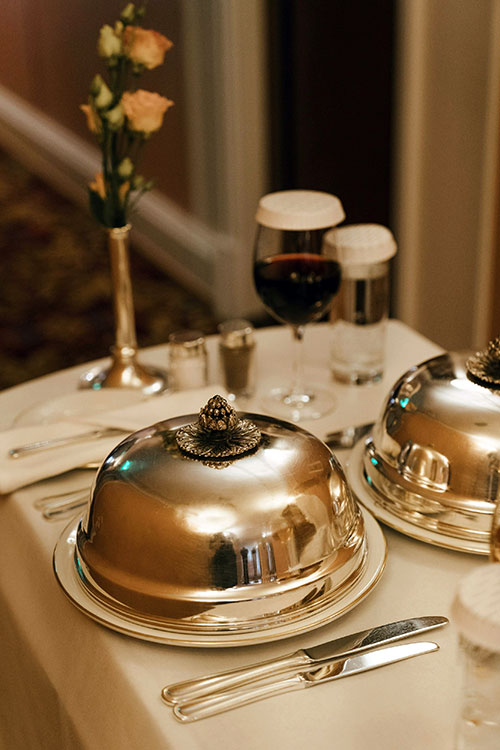Fine Dining Etiquette That Elevates Your Professionalism
LifeSkills Academy Blog
Check back often to find interesting information and updates.
Fine Dining Etiquette That Elevates Your Professionalism
Written by: Sandi MacCalla – Founder, LifeSkills Academy – 3/24/2025
Dining etiquette may seem a minor detail in the grand scheme of business, but in high-stakes professional settings, how you handle yourself sets you apart. Whether you’re networking with executives, hosting an important client, or attending a corporate gala, demonstrating refined dining skills signals confidence, cultural awareness, and leadership potential. If you’ve ever felt unsure about fine dining protocols, now is the time to sharpen your expertise—before a major event puts you in the spotlight. Mastering these subtleties not only impresses your colleagues and upper management but may open doors you never expected.
Hosting with Confidence
Handle the Check Before It Arrives
We’ve all witnessed (or been part of) the awkward scramble for the check. While generosity is always appreciated, an impromptu battle over payment creates unnecessary tension at the table. If you’re the host, take control in advance—slip your card to the Maître D’ or call ahead to settle payment discreetly. This small but powerful move quietly reinforces your leadership and spares any awkwardness of watching you fumble for your wallet.
Pro Tip: Etiquette expert Patricia Napier-Fitzpatrick advises women, especially those traveling in male-focused cultures, to establish their role as hosts early by handling payment arrangements before the meal.
 Let Your Guests Order First
Let Your Guests Order First
A great host ensures their guests feel comfortable. Just as you would in your home, your role at a fine dining restaurant is to prioritize their experience. This means encouraging your guests to order first. If needed, clarify to the waitstaff that you are the host by using phrases like, "My guest will order first." It’s a subtle but significant way to demonstrate thoughtfulness and professionalism.
Keep the Rhythm: Match the Number of Courses
Dining is about flow—everyone should ideally receive and finish their meals around the same time. If your dining partners order three courses, follow suit. Ordering more or fewer courses than your tablemates can disrupt the experience, leaving someone awkwardly waiting or rushing to keep up.
The Table
Utensil Anxiety?
One of the most intimidating aspects of fine dining is the array of utensils. If you’ve ever stared down a table setting and felt overwhelmed, remember this simple rule: Use the outermost utensil first and work your way in.
A Lesson: In his memoir Hillbilly Elegy, Vice President JD Vance recounts his first experience at a formal dinner. Upon seeing an overwhelming array of utensils, he panicked and called his girlfriend for help. Her advice? Start from the outside and move inward—timeless wisdom that remains.
No Need to Ask for an Oyster Fork
If your oysters arrive without a fork, resist the urge to request one. Many fine dining establishments pre-loosen the oysters for you, meaning an oyster fork isn’t needed. Asking for one may signal your unfamiliarity with fine dining customs.
Napkin Etiquette: A Small Detail with a Big Impact
Your napkin belongs on your lap—folded in half with the crease facing you. This isn’t just about placement; it allows for discreet dabbing rather than wiping. If you need to step away, leave your napkin neatly folded to the left of your plate. And if you’re worried about visible stains? Simply fold the clean side over the used portion before setting it down.
Wine Talk
 Be Subtle About Pricing
Be Subtle About Pricing
Wine menus at fine dining restaurants can be daunting, and discussing prices openly can be awkward. Instead of stating your budget outright, subtly point to a selection in your price range and ask for recommendations within that category. This keeps the interaction smooth and polished.
Sending Back Wine?
It’s tempting to send back a bottle that’s not quite what you expected, but unless the wine is truly spoiled or corked, avoid returning it. Sommeliers often taste the wine before serving to ensure quality, so rejecting a bottle for minor taste preferences can come across as inexperienced.
The Silent Signal
Ending Your Meal Gracefully
In fine dining, servers won’t ask, “Are you done with that?” Instead, signal you’ve finished by placing your knife and fork together diagonally across your plate at a 10:20 position, with the fork tines facing up, the knife above, and the blade facing you. This universal sign helps maintain the elegant dining experience without unnecessary interruptions.
Final Thoughts
Mastering fine dining etiquette isn’t about being pretentious—it’s about being prepared. When you move through a formal meal with ease, you project confidence, cultural fluency, and attention to detail. Whether hosting a client, mingling with upper management, or simply elevating your professional presence, these subtle skills make a lasting impression.
So, before your next high-stakes dinner, take the time to refine these techniques—you may be surprised at how much they enhance both your professional and personal presence.
LifeSkills Academy educators are professionals, some with academic backgrounds, and all have proven success in the world of commerce. We feature online learning in:
- Etiquette/Social Intelligence
- Financial Skills
- Adulting Practices
Join our email list to receive updates and details: https://www.lifeskillsacademy.expert
Share this post!
Most Recent Posts ...
Posted on: 3/31/2025
Posted on: 3/17/2025
Posted on: 3/10/2025
Posted on: 3/3/2025
Search All Blog Posts
Blog Post Archive Categories
- Gaslighting: Recognizing, Counteracting, and Setting Up Boundaries
- 10 Success Strategies to Organize A Job Search
- Digital Fluency in Communications
- Fine Dining Etiquette That Elevates Your Professionalism
- Mastering Emotional and Cultural Intelligence
- Unlock Your Critical Thinking Superpower
- Words of Wisdom: Traveling 2024
- Thankful Thursdays
- Mothers - Words of Wisdom
- My interview with Dennis Pearce




